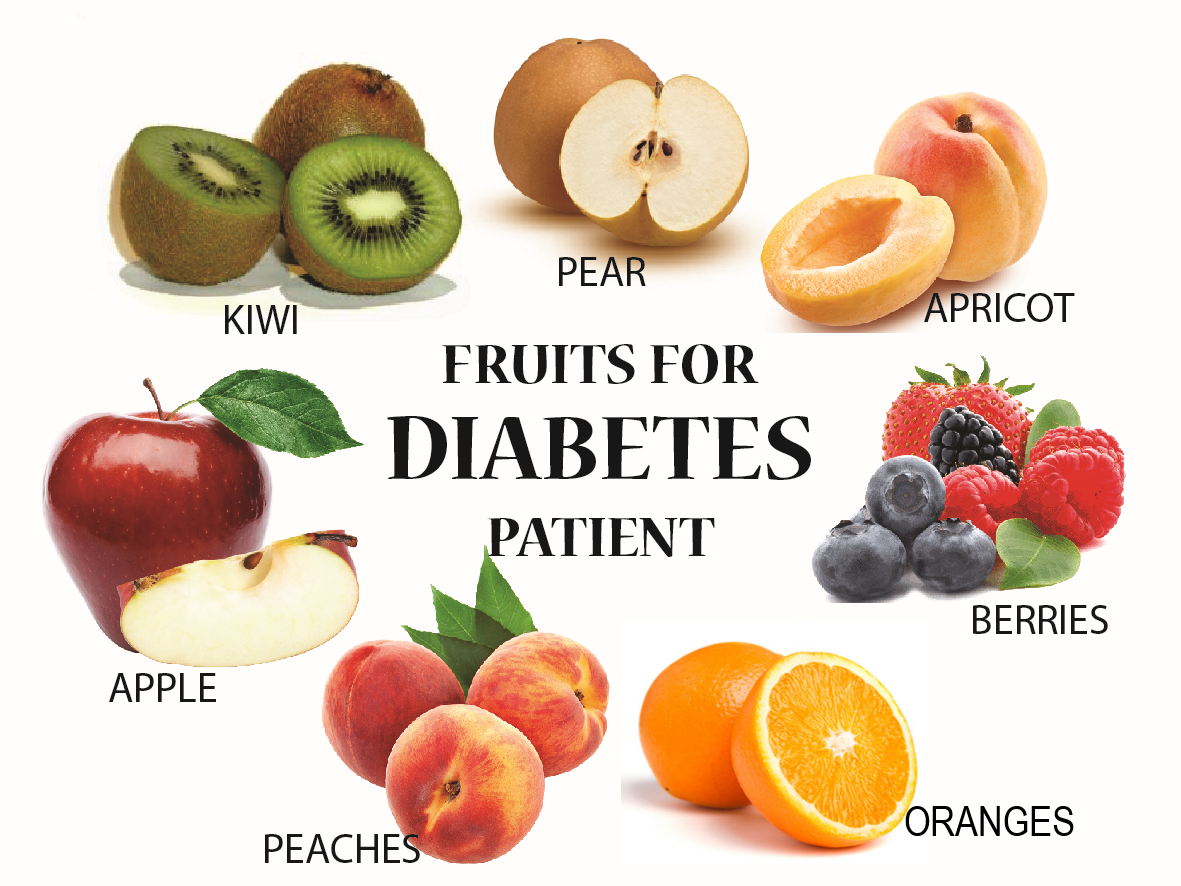Contrary to popular belief, as serious a diagnosis of diabetes is, it certainly does not mean that you need to be on an extremely limited and disappointing diet. Of course eating well and managing your sugar levels means careful consideration at every meal, but the common misconception here is that many foods, like fruits, are off limits to diabetic patients. But there are many great choices of fruits for patients with diabetes. The truth is, when managing your diabetes there is no food that is prohibited, and it’s all about balance.
What Are the Best Fruits for Diabetic Patients?
Avoiding sweets like chocolate and candy is recommended, and you can find some really great substitutes for them in very sweet fruit with a low glycemic index (GI value of 55 or less). Fruits with a low GI value are great for patients with diabetes because they can help better regulate blood sugar levels. In addition to having a low GI value, the fruits in this list offer some other amazing health benefits.
1. Berries for Antioxidants
Berries are considered superfood fruits for diabetic patients because of their low-GI, and their high amounts of antioxidants, vitamins, and fiber. At only 62 calories for three quarters of a cup of blueberries, you have the freedom to truly spoil yourself.
2. Tart Cherries for Combatting Inflammation
One cup of tart cherries only costs you 78 calories, and this satisfying fruit is proven to help fight inflammation, and is also loaded with antioxidants. Tart cherries are a delicious and smart low-GI fruit choice for the diabetic diet.
3. Potassium Rich Peaches
Everyone loves a fresh, juicy peach on a warm summer day. You can enjoy these delightful fruits as well. Peaches are a great source of potassium and fiber, as well as vitamins A and C. One peach only added up 39 calories.
4. Apricots for Fiber
One fresh apricot has 17 calories, and having four apricots will provide you with more than half of your daily vitamin A requirement. Additionally, apricots are an excellent source of fiber, which can help control blood sugar levels, lower cholesterol levels, and maintain a healthy weight.
5. Apples for Vitamins
Apples are a great choice for the diabetic diet. A small apple has loads of vitamins and fiber, and add just 77 calories. Apples are considered a great source of vitamin C, so as the old adage goes, eating an apple a day could actually keep the doctor away.
6. Oranges for Vitamin C
One orange provides your body all the vitamin C you need in one day. This tasty citrus low-GI treat will only set you back a mere 62 calories. In addition to the vitamin C, oranges also have folate and potassium.
7. Pears for Fiber and Vitamin K
Pears are a great source of vitamin K and fiber, which makes it a fantastic addition to your diet. After a pear is picked, its flavors and textures become more rich and delicious. You can store them at room temperature until they are perfectly ripe. One pear equals 57 calories.
8. Low-Carb Kiwis
At only 56 calories and 13 grams of carbohydrates for a large kiwi, this fun and fresh fruit is a nourishing and healthy choice for the diabetic patient. Eating kiwis can benefit everyone, as they are incredibly rich in vitamin C, fiber, and potassium.

Should Diabetic Patients Avoid Fruit Juice?
Yes, they should. Fruit juices, even those packaged “sugar free” fruit juices, are not a healthy choice for diabetics. Drinking juice can cause an unwanted spike in blood sugar levels; whereas chewing a fruit will cause a slow and steady rise in blood sugar, which is easier to maintain for the diabetic patient.
Studies have shown that drinking fruit juice, as opposed to eating fruit, is the much unhealthier option. Fruit juice has high levels of fructose, which can counter the benefits of the fruits themselves, while causing an insulin spike at the same time. Therefore, eating the fruit will serve you its benefits without a scare.
Drinking large amounts of fruit juice has also been proven to radically increase your risk of obesity. Children especially, because most children are served fruit juice rather than water on a regular basis. Research confirms that pre-kindergarten age children with a bit of extra weight, drinking only one or two sugary drinks a day, are actually doubling their risk of becoming severely overweight in just one year.
When shopping for fruit juice, have a look at the labels. Most packaged fruit juices have very high levels of artificial flavors and high fructose corn syrup. Don’t be fooled either, even one eight-ounce serving of fresh squeezed juice can have eight teaspoons of fructose. So when following your diabetic meal plan, it’s wise to just avoid fruit juices altogether, and stick to eating the recommended low-GI fruits for diabetic patients.
Tips for Diabetics on Fruits
- Most fruits and vegetables are best when consumed raw, because cooking rids them of much of their nutrients. For vegetables, try steaming, poaching or even microwaving rather than boiling if you insist on cooking them, adding some herbs and spices for extra flavor.
- You can’t get all the nutrients and vitamins you need in just one place, so it’s important to include a wide variety of fruits and vegetables in your diet. A good rule of thumb is to include a rainbow of colors in your diet.
- Be careful with dried fruits, as they are not nutritionally rich like fresh fruits, and a full serving is only about one tablespoon, which makes it easy to get carried away.
- Canned fruits are okay if they are packaged in their natural juice and not syrup, so make sure to check the labels.